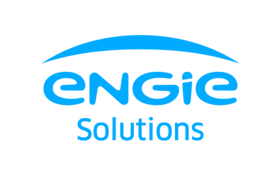Newsletter subscription
The development in its territory of heating networks associated with energy generated from renewable energy is part of the public energy policy of Nantes Métropole. Pro-active, it is one of the major greenhouse gas control tools in the territorial Climate Plan.
The urban heating networks
The heating networks allow using renewable energies by :
- collecting heat from waste incineration,
- enhancing the implementation of boiler rooms supplied by biomass (mainly timber industry).
It is a powerful lever to limit CO2 emissions. For Nantes Métropole, this means controlling costs of heating energy and diversifying its generation. Heating supplied by the networks is intended for housing, as well as offices and public facilities.
A heating network is made of :
- Heat generation resources - boiler rooms/HWIU/individual boilers : they use different fuels to generate heat in the form of hot water, and guarantee the temperature of the water supplying the piping network laid under the roadworks.
- Piping: an underground piping network transports heat to the subscribers. This network is the "primary network", as opposed to the "secondary network" used to distribute heat inside the buildings.
- Substations:
o They convert heat of the network into heating and hot water,
o They adapt the temperature and quantity of energy to user needs,
o They evaluate energy consumptions.
The entire facilities are automated and supervised for optimum use.
Topkapi SCADA software: a need-oriented solution
All substations (over 300 ultimately) are fitted with remote management controllers by SOFREL ensuring local automation. As it is easy to deploy, the communication medium used to centralize data on Topkapi supervision is GPRS: ENGIE's VPN used to secure communications. IT security is a major concern, second to human safety. All communications, whether controllers/supervision or client/supervision server (The Webserv module is used for remote diagnostic), pass through this VPN and no opening to the outside is authorized (no Internet connection on computer stations).
To ensure optimum generic deployment of the new substations, SOFREL controllers have received standardized programming and Topkapi's object configuring capabilities allow simple integration of new substations to supervision, even for Topkapi non-specialists.
To meet availibility and maintainability needs, ENGIE has chosen to deploy a single Topkapi application on several physical servers, and as many Topkapi licenses. The project's phasing was as follows:
- The first Topkapi License was installed in the Malakoff boiler rooms
- This application was soon redounded for availibility purposes
- Finally, during the construction of the Californie biomass heating unit, a third server was installed in this site for local control. It was redounded by one of Topkapi's servers in Malakoff.
A single application offers access to all installations (boiler rooms and substations); on all supervision stations and the applications's web clients. To ensure service continuity, high availability is ensured by 3-server hot swapping (backup 2 by 2).
Ultimately, Topkapi actually meets operating needs by offering genuine hypervision: data centralization, global and summarized vision, remote control, diagnostic and optimization tool.
A few key figures
Network :
- 85 km of network by 2017 (22 km in 2012)
- 16,000 housing units served, including 8,000 social housing units, and numerous public facilities (swimming pools, hospitals/clinics, schools, museums, etc.).
- 3 sub-networks, 2 of which are meshed (2 production sources can feed the same network)
- 208 MW of installed capacity at the end of the extension works in progress
- 84% of the energy mix is made up of local and renewable energies.
- 380 substations connected
Automation :
- Substations: SOFREL secure GPRS communication via VPN ENGIE Réseaux
- Supervision :
o Hypervision: networks (distribution / substations) and production (boiler rooms). Hot redundancy with 3 servers. High availability.
o Topkapi application of more than 25,000 variables
o Web clients for remote access
o Data centralization
o Global vision
o Monitoring / piloting




